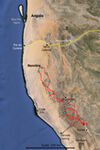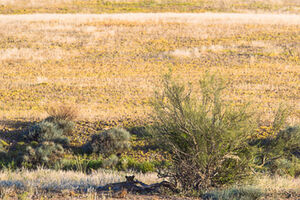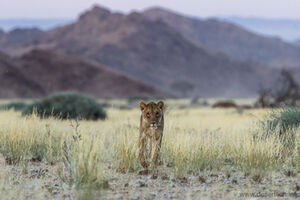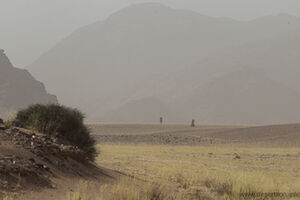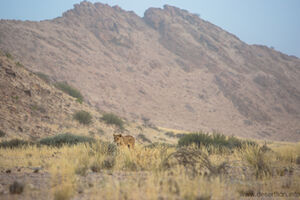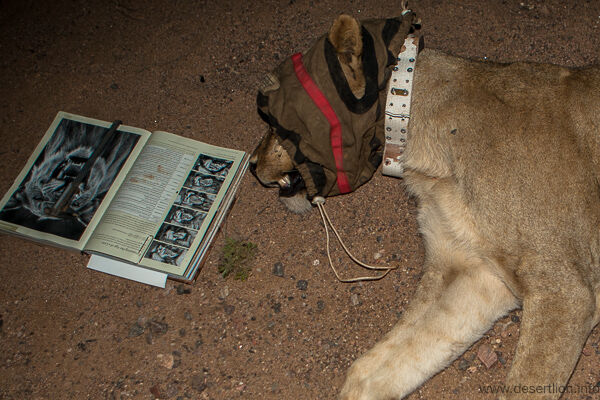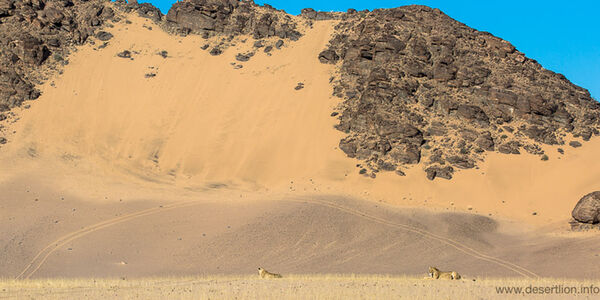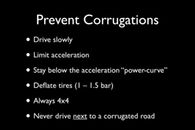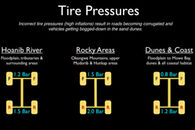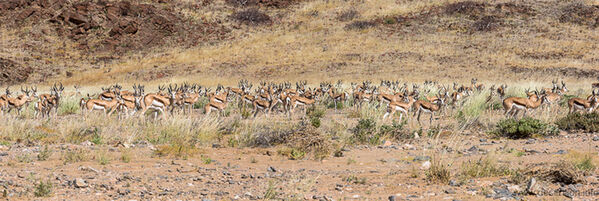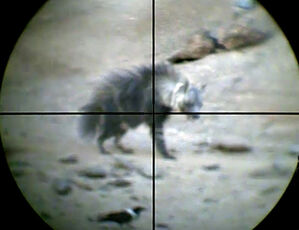Purros Lion Problem == Brown Hyaena Study
Tuesday 3 July 2018
Purros Lion Problem
The male lion that was translocated to Sarusas spring after causing problems around Purros at the end of May 2018 has disappeared. The lion returned to the area of abundant donkeys along the Hoaruseb River 10km north of Purros (see map). His satellite collar stopped transmitting positions five days ago. There were no reports suggesting that the lion may have been shot. Cliff Tjikundi and the Rapid Response Team are investigating the incident to determine if the radio collar had failed.
Early-warning and monitoring systems
The process of implementing the NW Human-lion Conflict Management Plan continues to be a priority for the remainder of 2018. All the involved parties (e.g. the Ministry of Environment & Tourism (MET), IRDNC, NNF, TOSCO & DLP) have agreed and are collaborating towards this common goal. Funding for the entire system, which amounts to approximately N$ 800,000 plus N$110,000 per annum for satellite downloads fees, operational & maintenance costs, have not yet been secured in full and may only be available by mid 2019. With the available funds the Desert Lion Project, in collaboration with MET, IRDNC & TOSCO, will make a concerted effort to fit 10 satellite Early-warning collars and 20 GPS Early-warning collars to lions and erect four Early-warning systems at key conflict “hot-spots” by the end of 2018.
Okongwe Mountains
More than 10 days were invested in searching the mountains of Okongwe and the associated ephemeral rivers to locate the surviving members of the Okongwe and Hoanib Prides.
The spoor of a lioness was found at the Okongwe waterhole and followed for two days. She was immobilised and fitted with a GPS Early-warning collar. This brings the number of lions fitted with GPS EW collars to six.
Vehicle tracks
The increase in tourism in the Northern Namib, with two new lodges in the Hoanib/Hoaruseb Rivers, and aggravated by a spurt of irresponsible driving, has had an impact on the environment. The beauty of the area has in many places been scarred by vehicle tracks. The photo below of Xpl-69 and one of the Orphans along the lower Tsuxib River is a case in point. The same vehicle repeatedly drove into pristine valleys north of Amp’s Poort at an active brown hyaena den, despite the efforts of Wilderness Safaris to sweep and close the tracks.
In collaboration with TOSCO, Ultimate Safaris & Wilderness Safaris an effort is made to inform other tour operators and lodges of the need to limit off-road driving and to drive responsibly. A training course was developed (see below) to make everyone more aware of the sensitivity of the habitat and the need to protect it.
Wildlife movements
The exceptional rainfall of late April 2018 has resulted in unusual movement patterns of some wildlife species, such as Hartmann’s zebra, gemsbok and springboks. Big concentrations of springboks were observed in unusual areas and herds of zebras ventured deep into the Skeleton Coast Park to feed on the gravel plains.
Brown Hyaena Study
The breeding female of the Amp’s Poort brown hyaena clan was immobilised to replace a faulty radio collar.

